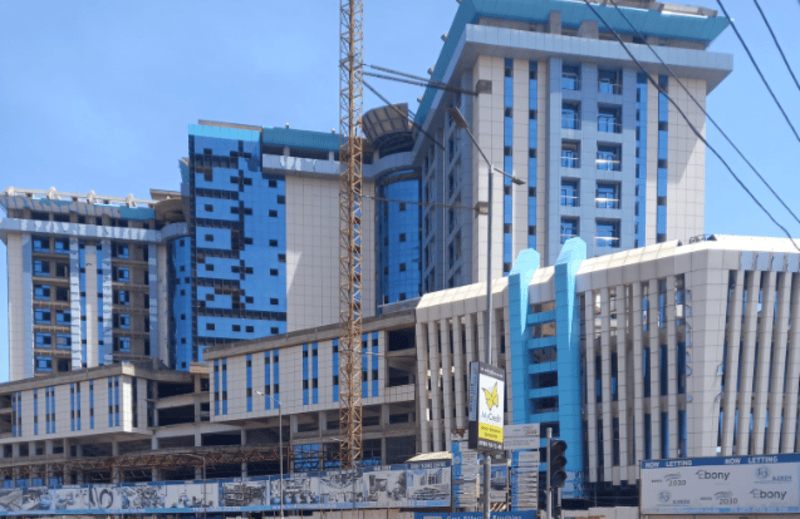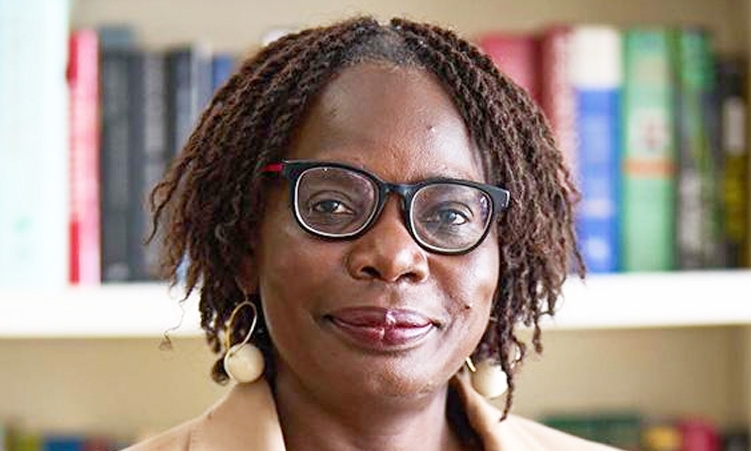 The stalled building of the Kenya Industrial Research and Development
Institute (KIRDI) in Nairobi.
The stalled building of the Kenya Industrial Research and Development
Institute (KIRDI) in Nairobi.In the heart of Nairobi’s industrial area, a large concrete structure looms, glass fittings on parts of the structure falling off, while blue paint on other sections peeling off. This is a skeleton of a dream that once symbolised Kenya’s hope for scientific and industrial innovation.
This is the stalled building of the Kenya Industrial Research and Development Institute (KIRDI), a project that was meant to revolutionise the country’s capacity for applied research and industrial development. The once-promising project now stands as a stark reminder of how we as a country have failed to prioritise research Science and Development as a key driver of the country’s economic growth and development.
According to the Auditor general’s report for the financial year 2024, the project has already cost taxpayers Sh5 billion, with the original budget of Sh3.9 billion increasing to Sh5.4 billion as a result of delays and rising costs.
In a related development, the Kenya Medical Research Institute (Kemri) recently raised an alarm that it may be forced to halt operations after being left out of the 2025/2026 budget allocation for medical research. The government allocated only Sh2.7 billion for salaries and recurrent expenses, with no funds earmarked for actual research activities, leaving Kemri solely reliant on donor funding. The total national budget allocation for Research, Science, Technology, and Innovation for 2025/2026 stands at a mere Sh993 million, which is a drop from last year’s Sh1.1 billion.
Research and development (R&D) typically encompasses three categories: Basic research largely performed by higher education and public institutions and leads to publications and few patents; applied research; and experimental development, which refers to scaling up, pilot testing, clinical/field trials and such. It is largely funded and performed by firms and results in patents, trademarks and new or improved products.
Kenya,
like in most African countries, has remained below the Africa Union target of one
per cent of Gross Domestic Product in R&D. African heads of state and
government had committed to raise their
national gross expenditure on research and development (GERD) to at least 1 per
cent of their gross domestic product (GDP) in order to drive innovation,
economic growth and productivity.
However, this this seemingly modest target of raising GERD to ‘1 per cent of
GDP’ remains elusive. Kenya has been investing an average of 0.79 per cent of
GDP on R&D, which is below the country’s target of 2 per cent, and the
Africa Union target of 1 per cent.
Moreover, the share of researchers per million people has also remained low in Kenya at an average of 221 researchers per million people, against benchmark countries such as Korea, Denmark and Sweden who have 7,980, 8,066 and 7,536 researchers per million people, respectively. This implies according to Unesco that Kenya's share of researchers per million people is 86 times lower than that of Denmark's. In addition, the growth rate of R&D expenditure in Kenya, which according to the System of National Accounts (SNA 2008) is recorded as a component of Intellectual Property Product (IPP) under gross fixed capital formation, has been declining since 2015 from 22.2 per cent to 6.4 per cent in 2018 .This implies a possibility of a declining trend in the value of R&D assets in the country.
While budget allocations are crucial, successful R&D ecosystems also thrive through strategic public and private partnerships. In the short term, the government must invest in infrastructure and skills to position public R&D institutions as preferred partners for both private firms and public agencies.
For Africa, increased R&D spending is seen as key to achieve self-reliance, economic diversification, employment and wealth creation and meeting globally agreed commitments. The calls for increased investment in science and technology, and research and development (R&D) in particular, can be traced back to the Monrovia Declaration of 1979 on Guidelines and Measures for National and Collective Self-Reliance in Social and Economic Development for the Establishment of a New International Economic Order and the follow up Lagos Plan of Action (LPA) for the Economic Development of Africa (1980–2000).
One often-asked question is why Asia has advanced more rapidly than Africa in terms of economic growth. The answer may lie in R&D investment patterns. Take South Korea, for instance is ranked 10th globally in innovation with 80.29 per cent of its R&D expenditure contributed by business enterprises. In contrast, Kenya’s private sector contributes only 8.66 per cent to its GERD (Gross Domestic Expenditure on R&D), with the bulk of funding coming from government and academia.
In Malaysia and South Korea, business enterprises play a leading role in both funding and conducting R&D, which could explain part of the economic gap between Africa and Asia. As Kenya seeks to accelerate economic development and be at par with its aspirators in Science, Technology, and Innovation (ST&I), low R&D investment among the business enterprises in Kenya key area of policy concern. China for instance allowed researchers in public institutions to set-up their own tech-businesses in their spare time, undertake consultancies for private firms and encouraged public R&D institutions to commercialise their outputs.
To
bridge this divide, Kenya must urgently address the lack of private-sector
participation in R&D. Countries like China have encouraged researchers in
public institutions to establish tech startups, engage in private consulting,
and commercialise their innovations.
Kenya can strengthen its R&D ecosystem by: Establishing transparent public funding mechanisms for both public and private R&D initiatives; Prioritising contracts for local research institutions ; Promoting the commercialization of research outputs through clear national policies ; Supporting the creation and growth of technology hubs that drive R&D investment.
Technology commercialisation policies at
national level can induce specialised centers in agriculture, energy, health
and mining, among others, to strategically invest in R&D activities that
are likely to result in marketable products and firms and pursue R&D
alliance with industry and government.
The writer is a researcher in food systems and livelihoods.

















